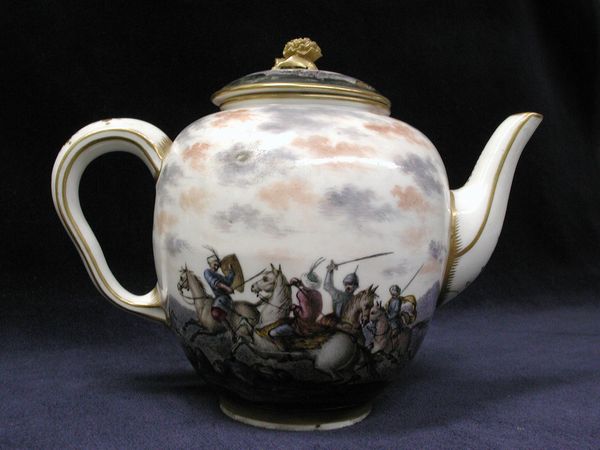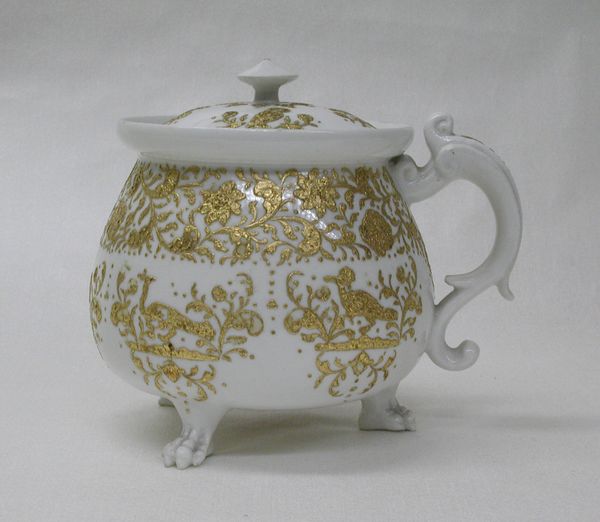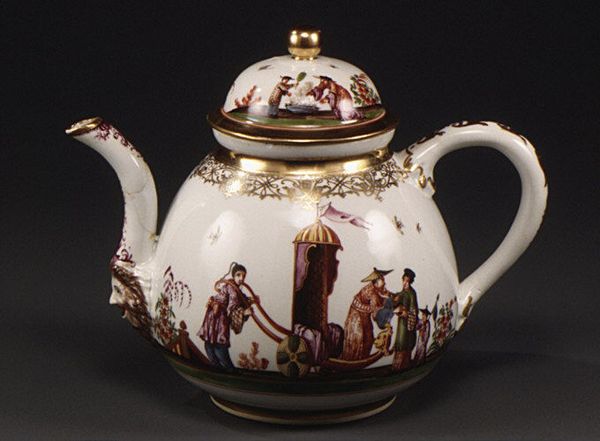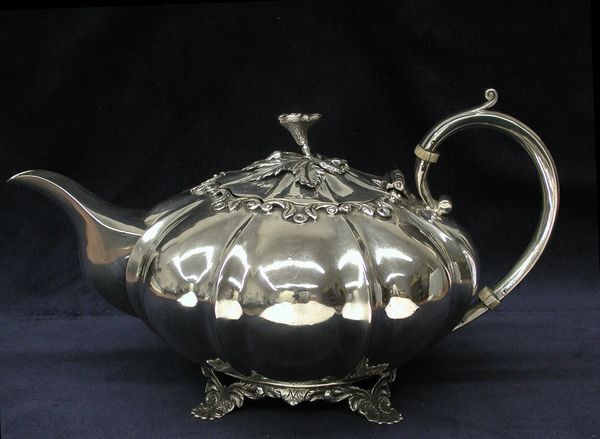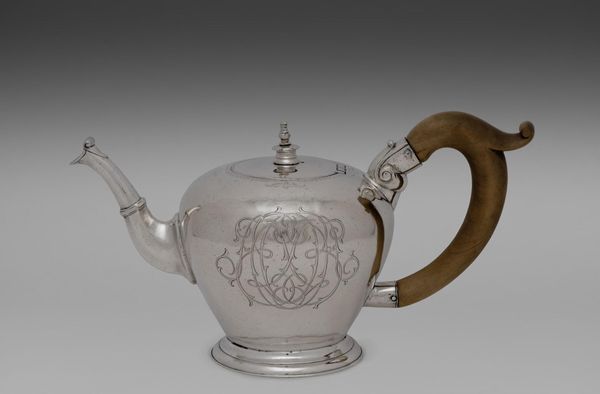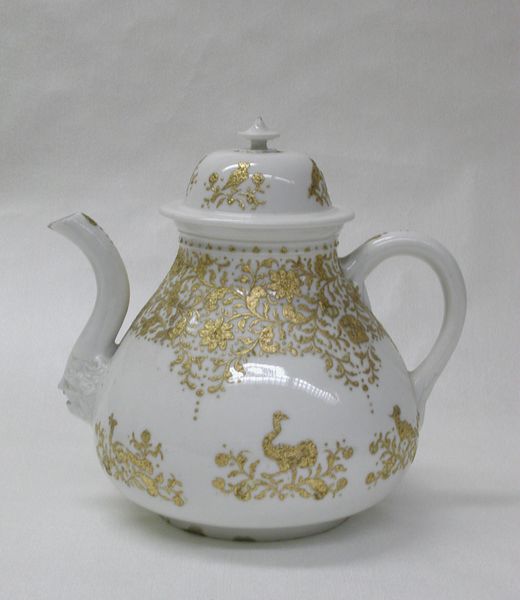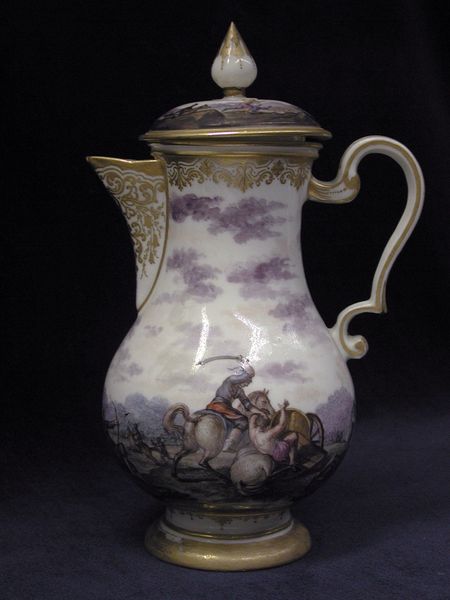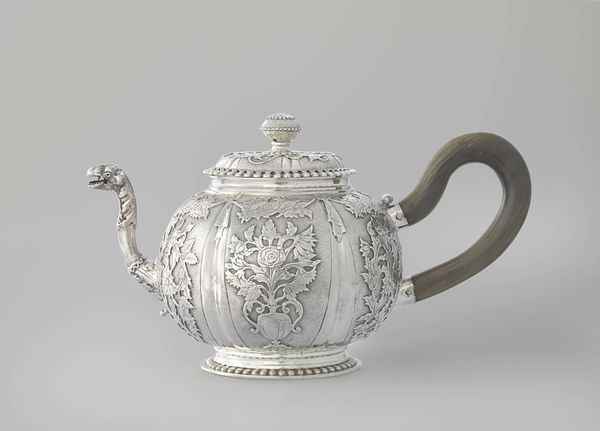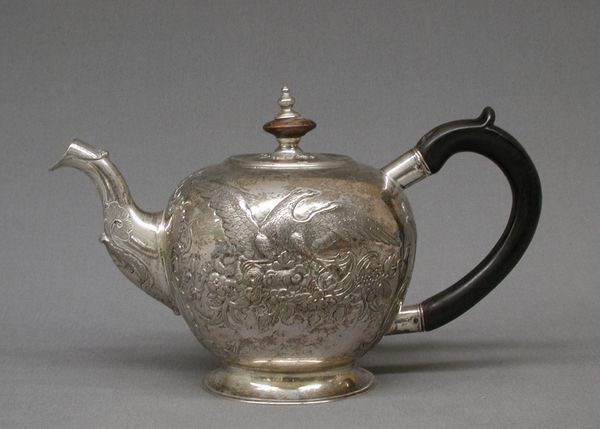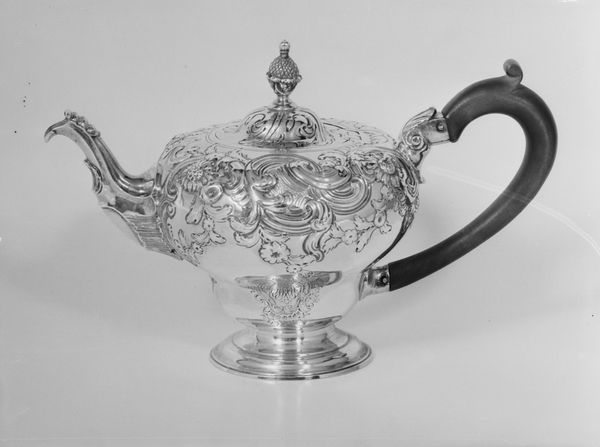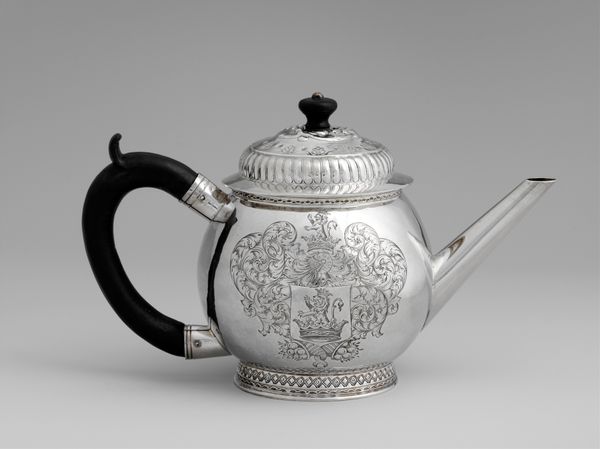
ceramic, porcelain, sculpture
#
baroque
#
human-figures
#
ceramic
#
bird
#
porcelain
#
plant
#
sculpture
#
ceramic
#
decorative-art
#
rococo
Dimensions: Height: 4 5/8 in. (11.7 cm)
Copyright: Public Domain
Editor: We’re looking at a porcelain teapot, part of a service, made by Meissen Manufactory between 1720 and 1725. The crisp black silhouettes against the white porcelain give it a striking, almost playful quality. What catches your eye in terms of its construction? Curator: The stark contrast between the black enamel and the white porcelain is indeed visually arresting, and serves to accentuate the forms rendered. Observe how the artist utilized the curvature of the teapot to influence the placement and perspective of these figures, these plants, even the birds. The frieze of human figures and fantastic fauna encircling the pot, they are not merely decorative elements; their shapes contribute to the teapot's overall structural harmony. It has a nearly self-contained universe look about it. Editor: I see what you mean. It’s not just applied decoration, it is integral. I guess what seemed whimsical at first glance has a stricter, almost mathematical quality about it. Do you think that the handle or the spout function as structural elements? Curator: Precisely. The spout and handle, while functional, serve as framing devices. They arrest the eye, creating a visual pause. Without them, the dynamic figures might seem to float aimlessly around the ceramic body. Furthermore, the near-absence of color concentrates the viewer's attention on the line, balance and shape. Does this then give rise to certain feeling? Editor: It’s really interesting how each component supports the overall design. Now I think the color adds an expressive element to this. It moves between drama and light. Thanks for pointing that out. Curator: Indeed. Reflect on this convergence of artistry and manufacture – a vessel of utility transformed into a tableau of pure visual delight.
Comments
No comments
Be the first to comment and join the conversation on the ultimate creative platform.
